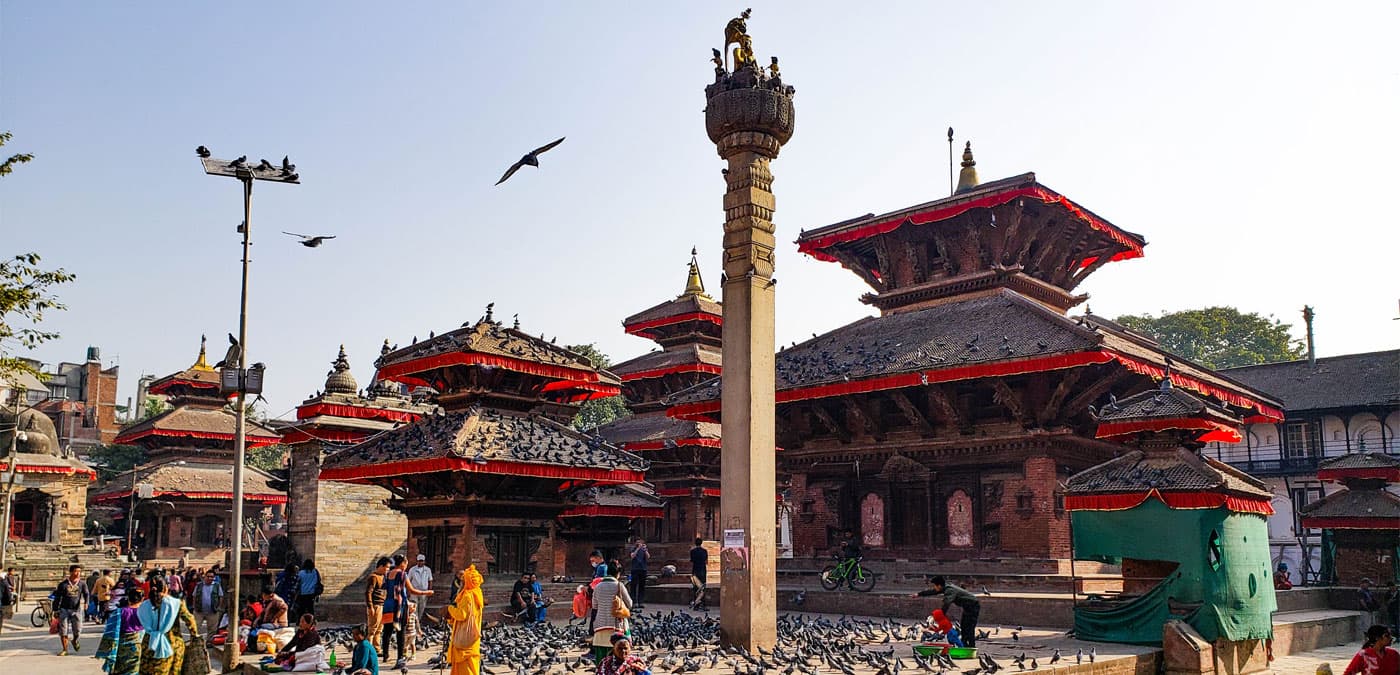Kathmandu Durbar Square- UNESCO World Heritage Site
Nepal, gracefully cradled by the majestic Himalayas, is a gem tucked between two powerful neighbors, China and India. Situated in the heart of Asia, this diminutive nation leaves an indelible impression on every traveler. Envision towering snow-clad peaks, mysterious river canyons, ancient urban marvels, diverse temple architectures, warm-hearted locals, and entrancing traditions. Truly, Nepal is a wanderer's paradise, offering unparalleled experiences.
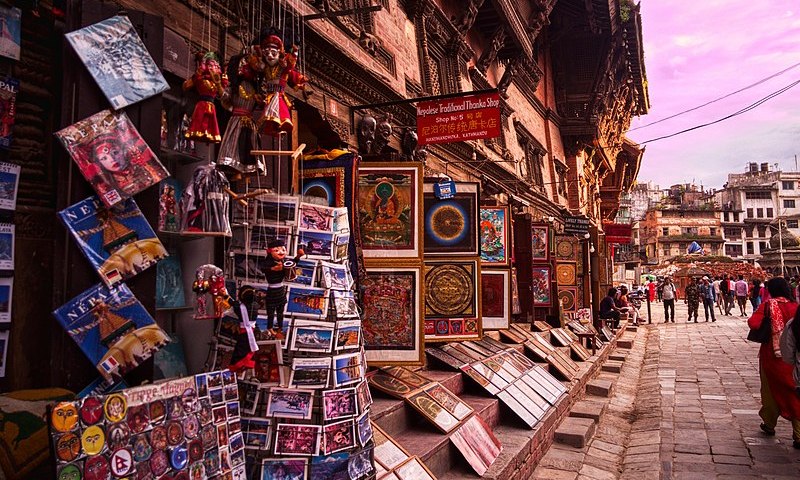
Kathmandu, the pulsating heart and capital of Nepal, stands as a testament to the nation's age-old legacy and one of the earliest civilizations. Brimming with cultural richness and architectural wonders, it proudly hosts seven UNESCO World Heritage sites, with Kathmandu Durbar Square shining as a prime example. The city's old quarters whisk visitors through serpentine medieval alleys, dotted with quaint shrines and regal palaces. A treasure trove of architectural styles, Kathmandu boasts iconic Pagoda and Shikhar-style temples, along with intricate stone and wood carvings. Among its many jewels, Kathmandu Durbar Square remains a must-explore, encapsulating the essence of the city's hidden wonders.
Kathmandu Durbar Square
Often referred to as "Basantapur Durbar" or "Hanuman Dhoka", Kathmandu Durbar Square stands as the historic core of the bustling Kathmandu city. Crafted meticulously during the Malla dynasty, this square is, without doubt, one of Kathmandu's most captivating attractions, boasting an impressive collection of the valley's most exquisite sculptures, temples, and monuments.
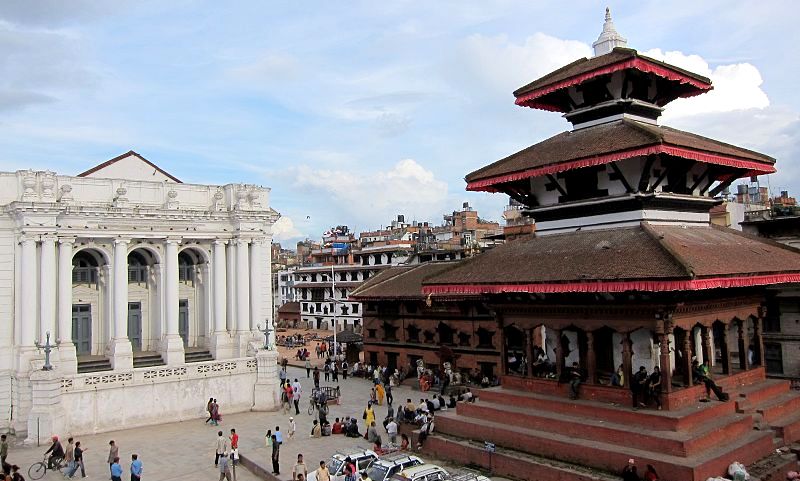
Esteemed as "the museum of temples", Kathmandu Durbar Square is a grand repository of architectural magnificence. With over 50 temples nestled within its precincts, it presents the densest congregation of ancient edifices in the city. From royal palaces to intimate courtyards, the square beckons travelers with its rich tapestry of historical artistry.
Visitors are invariably enthralled by the intricate details of stone and woodwork that adorn its structures. Majestic carvings, elaborate window panels, and age-old monuments narrate tales of bygone eras. Each corner of the square holds significant historical narratives, waiting to be explored.
To truly appreciate the depth of its heritage, one is encouraged to stroll through the square, absorbing its stories and marveling at the craftsmanship that has withstood the test of time.
Where is Kathmandu Durbar Square?
Kathmandu Durbar Square is situated in the heart of Kathmandu, the vibrant capital city of Nepal. Found in the old city, this iconic square represents the historical and cultural epicenter of Kathmandu, bearing witness to numerous events, ceremonies, and festivals that have shaped the nation's legacy.
Anchoring the bustling environment of the Kathmandu Valley, the Durbar Square is not just a physical location but also a symbol of Nepal's rich architectural and artistic traditions. Easily accessible and surrounded by markets, alleys, and local hubs, it remains a focal point for both locals and tourists eager to experience a blend of Nepal's historical and contemporary essence.
History of Kathmandu Durbar Square
Kathmandu Durbar Square once stood as the royal residence of the illustrious Malla and Shah kings, who governed the heart of Kathmandu. Originally crafted in the 17th century, this magnificent square embodied the splendor and grandeur of these monarchies. The devastating earthquake of 1934 greatly marred its beauty, necessitating extensive reconstruction and architectural rejuvenation. Rising from the ruins, the renewed Durbar Square achieved global recognition in 1979 when it was designated a UNESCO World Heritage Site, a fitting tribute to its historic significance and resilience.
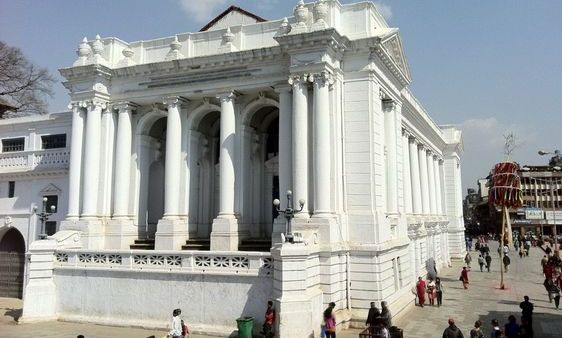
Malla Dynasty
King Ratna Malla christened Kathmandu Durbar Square as the royal abode, marking the commencement of his reign over the city. This grand palace served as the epicenter of power and governance for several Malla monarchs until the mid-18th century, witnessing the rise and rule of these leaders over what was then known as Kantipur City.
Shah Dynasty
Upon Prithivi Narayan Shah's triumphant capture of the Kathmandu Valley in 1769, he elevated Kathmandu to the prestigious status of the Capital. With this proclamation, Kathmandu Durbar Square underwent a series of architectural transformations, mirroring the shifting dynamics of power and prestige. For a sweeping span of 240 years, the Shah dynasty, from this Capital, influenced Nepal's destiny.
A significant shift occurred in 1963 when King Mahendra commissioned the Narayanhiti Palace. As the Shah monarchs transitioned to this new seat of power, Basantapur Durbar Square embarked on a new chapter. It was subsequently transformed into a museum, allowing visitors to step back in time and immerse themselves in the legacies of both the Malla and Shah dynasties.
Renovation in Kathmandu Durbar Square after the Earthquake in 2015
In 2015, Nepal faced a heart-wrenching repeat of history as it was struck by another devastating earthquake, reminiscent of the calamity in 1934. This disaster claimed thousands of lives, uprooted families, and wreaked havoc on the nation's architectural treasures, including facets of the iconic Kathmandu Durbar Square.
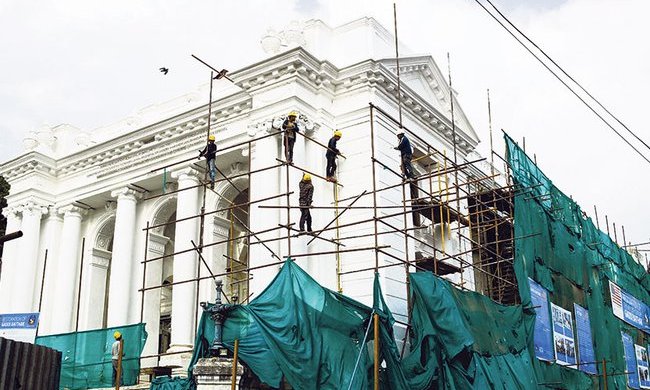
Despite the magnitude of the tragedy, the indomitable spirit of the Nepali people and the proactive response of government agencies shone through. Rapid restorations commenced not just in Kathmandu but across affected regions, emblematic of the nation's resolve and resilience.
Today, as one wanders through Kathmandu Durbar Square, the narrative of recovery is evident. While some edifices have been beautifully restored, others await rejuvenation. Yet, interspersed are age-old temples and structures that withstood the quake's fury. Together, they weave a tale of Nepal's timeless heritage and undying spirit, a testament to its rich past and unwavering determination.
Top Sights/ Places to Visit in Kathmandu Durbar Square
The Status of Hanuman
To the left of the primary gateway of Kathmandu Durbar Square stands a regal embodiment of the Hindu deity, portrayed as a monkey. Commissioned in 1672 by King Pratap Malla, this stone effigy is adorned with a rich red hue and is always draped in ceremonial red garments. Enhancing its revered stature, a golden umbrella casts its shade over the deity. It is this distinguished statue that lends its name to the historic "Hanuman Dhoka", a testament to its cultural and historical significance.
The Golden Door
Adjacent to the revered Hanuman image stands the magnificent Golden Door, serving as the primary entrance to the palace. Flanking this illustrious portal are two imposing stone lions. While the mighty God Shiva graces the lion on the right, Goddess Parvati elegantly perches on the left lion. The inscriptions, meticulously etched above the door, pinpoint its establishment to the year 1810. These inscriptions are not merely ornate decorations but narrate tales that echo through time.
Elevated above the Golden Door, on its left, lies a triad of intriguing figures ensconced within a large window alcove. These depictions, imbued with a distinct Tantrik essence, are characterized by their multiple arms, evocative skulls, and intimidating visages. Dominating the central niche is the deity, God Krishna, flanked on his right by his beloved consorts, Rukmini and Satyabhama. A testament to the Malla era's artistic prowess, these sculptures hail from the period between 1641 and 1674.
Nasal Chowk
Stepping through the illustrious Golden Door of Hanuman Dhoka Palace, visitors are greeted by the expansive Nasal Chowk. This triangular courtyard, the most grandiose among the palace's ten, unfolds tales of bygone eras. The edifices encircling Nasal Chowk predominantly hail from the Shah dynasty, while many of the resplendent sculptures are remnants of the Malla period. Nestled on the eastern flank of the courtyard is the modest shrine of Nasaleshwar, lending its name to this historic square.
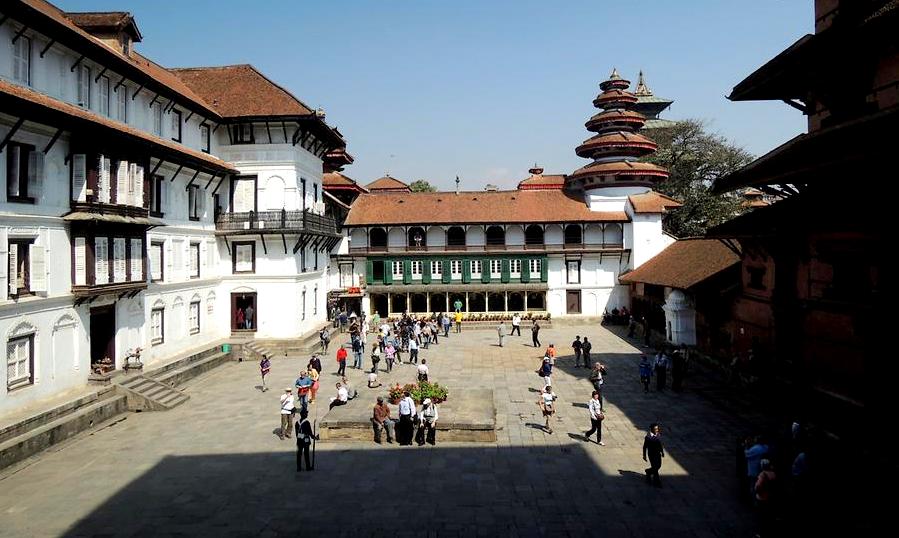
To the north of Nasal Chowk, the primary entrance reveals itself. Adjacent on its left stands a throne, a testament to the Malla dynasty's grandeur, still holding a place of reverence. At a further end, soaring towards the sky with its nine stories is the majestic Basantapur Palace. A symbol of conquest and ambition, this architectural marvel was commissioned by Prithvi Narayan Shah following his triumphant capture of the Kathmandu Valley.
Mohan Chowk
To the north of Nasal Chowk, nestled amidst the annals of history, is the regal Mohan Chowk. Originally erected in 1649, this space was the esteemed dwelling of Kathmandu's Malla Kings. Its grandeur, however, wasn't confined to the Malla reign; in 1822, the Shah dynasty undertook meticulous renovations, infusing the Chowk with renewed splendor.
The centerpiece of Mohan Chowk is the Sundhara, a golden water spout, an artistic marvel in itself. Adorning this spout are 36 intricate sculptures of various deities, each an exquisite testament to the region's rich artistic heritage.
Basantapur Chowk
From Nasal Chowk, a southeast gateway beckons visitors into the enchanting realms of Basantapur Chowk. Dominating this space is an intricate wooden edifice, each carving narrating epochs of Nepal's storied past. This captivating architectural wonder is synonymous with the renowned Nine-story Palace, often referred to as the Basantapur Tower.
Situated on the southwest perimeter of the courtyard, this tower stands as a testament to authentic Nepalese craftsmanship. Beyond its aesthetic allure, the Basantapur Tower also sets a stylistic benchmark, inspiring generations with its timeless design.
Taleju Temple
Nestled within Trishul Chowk, an extension of the famed Hanuman Dhoka Palace, stands the magnificent Taleju Temple. A testament to the 14th-century Malla artistry, this temple, constructed in 1564, pays homage to the revered Hindu deity, Taleju Bhawani. Its sanctity is such that only Hindus are granted passage, and even then, merely once a year during Dashain's auspicious ninth day.
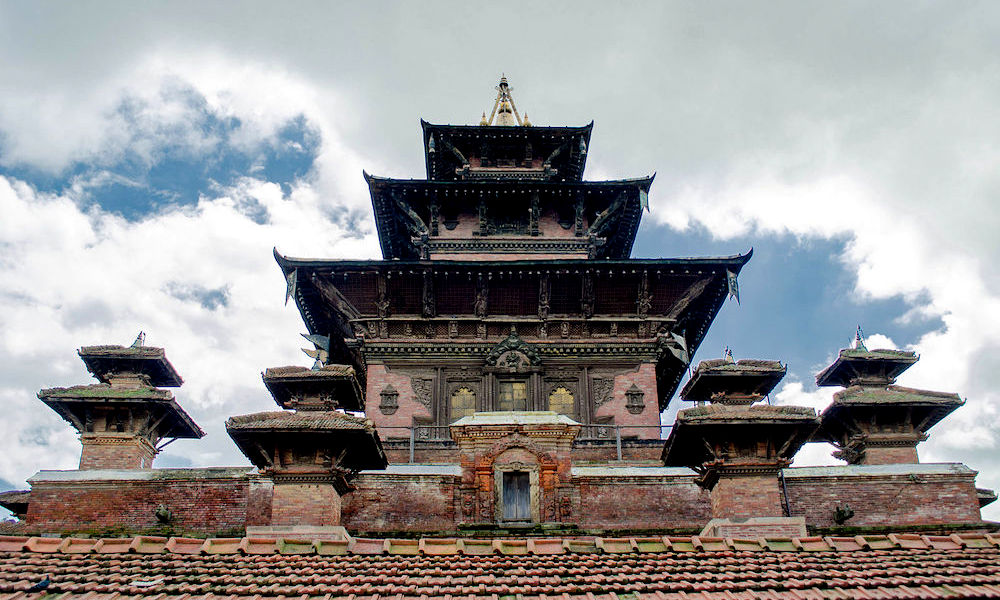
This architectural marvel is elevated upon a 12-tiered plinth, and each of its many statues holds a symbolic significance. The primary entrance, located on the temple's southern facade, is guarded by colossal stone effigies of men and mythical creatures, each believed to possess potent protective energies.
Venturing within, visitors are greeted by golden renditions of ten-armed deities, the most noteworthy of which are the shrines dedicated to Both Kumari, Nepal's living goddess, and the temple's presiding deity, Taleju herself.
Mul Chowk
Mul Chowk, a prominent feature of Hanuman Dhoka Palace, finds its origins in 1664, during the illustrious Malla regime. However, its contemporary visage was molded later, in 1709, through thoughtful reconstruction. This square, reminiscent of a Vihar or Buddhist monastery, is framed by a two-tiered quadrilateral structure.
Beyond the famed courtyards and temples of Hanuman Dhoka Palace, the surrounding landscape is adorned with a plethora of historic and captivating temples, each bearing tales of epochs gone by.
Kumari Chowk and Kumari Ghar
Situated to the south of Basantapur, Kumari Chowk stands as the sacred residence of the revered Kumari, the "Living Goddess". Regarded as a manifestation of Goddess Taleju, the chowk's rich legacy dates back to the Malla era. This architectural gem boasts a three-tiered quadrilateral design, its beauty accentuated by intricate woodwork.
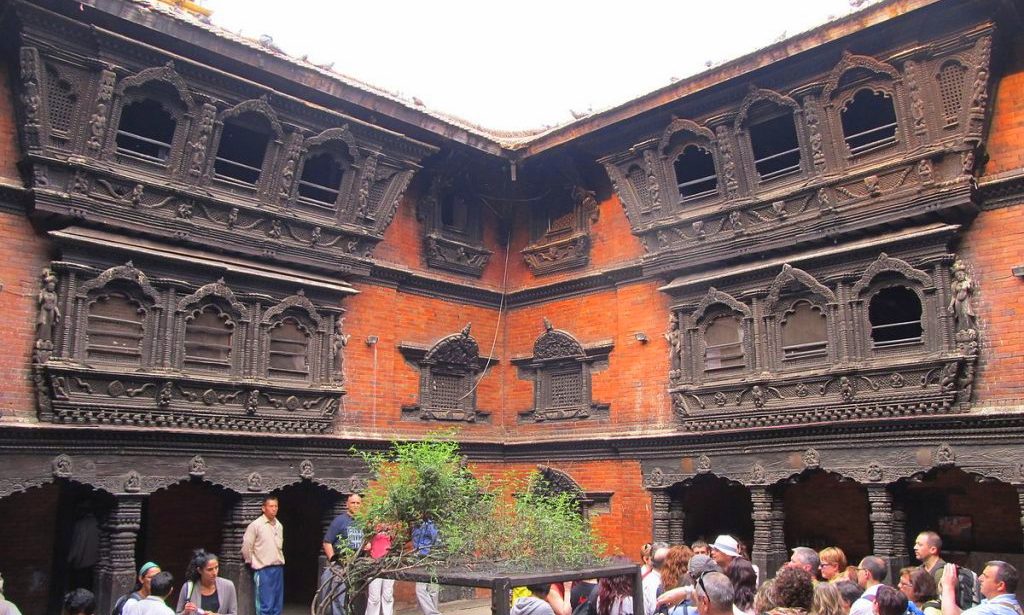
Within this sanctum, the Kumari graces onlookers with her presence, occasionally appearing through beautifully crafted windows, accompanied by her guardian priestesses. Her appearances are infrequent, with the primary exception being during religious festivities like Indra Jatra. For those fortunate enough, glimpses of her are cherished memories.
Every year, typically in August or September, the city of Kathmandu comes alive during the Indra Jatra festival. On this occasion, the Kumari is paraded across the city's main streets, seated on a grand chariot, captivating the hearts of all who witness the procession.
Trailokya Mohan Temple
Established in 1680 during the illustrious Malla period, the Trailokya Mohan Temple is a magnificent structure that stands upon a five-tiered plinth and boasts three distinct roofs. Engraved on its roof are captivating images of God Vishnu, emphasizing that the temple's entirety is a dedicated homage to this revered deity.
KasthaMandap
Kasthamandap, commonly referred to as Maru Sattal, stands as a testament to Nepal's rich history. Intriguingly, the city of Kathmandu owes its name to this very edifice. Crafted from the wood of a singular sal tree, Kasthamandap showcases a three-tiered design with its ground floor uniquely open, signifying its origins as a communal establishment.
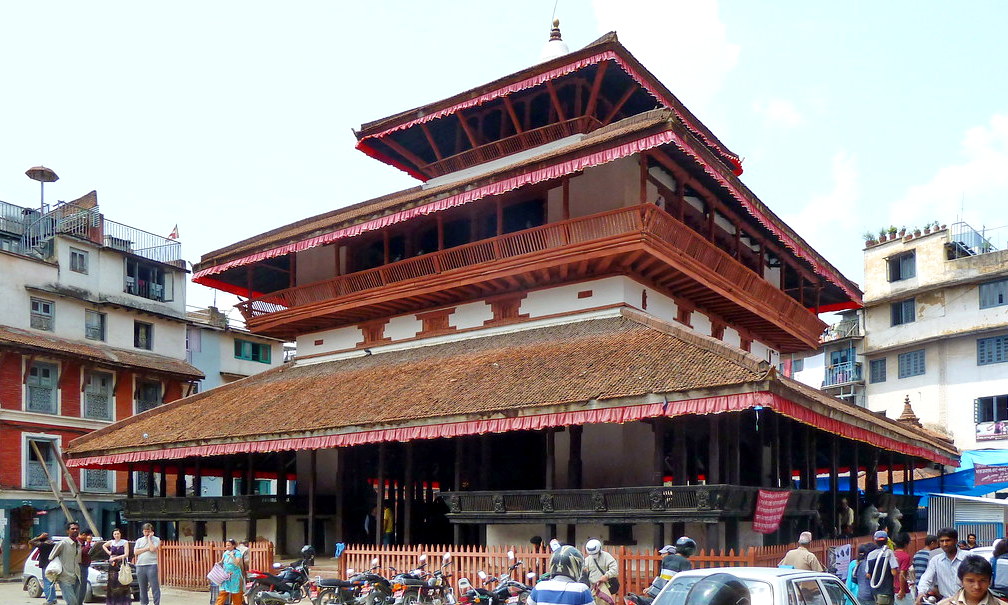
Within this architectural marvel, the heart of the structure is dominated by an effigy of the revered saint, Gorakhnath. Adorning each of the structure's four corners are representations of Ganesh, the elephant deity, a nod to its Malla regime origins. The temple's grandeur is elevated by its shimmering golden roofs, further amplifying its heritage and splendor.
The Great Bell
At the heart of the palace's attractions lies the Great Bell. Without its majestic presence, the palace would undoubtedly feel less whole. This impressive bell was installed by King Rana Bahadur Shah in 1787, resonating history with every toll. Interestingly, it chimes exclusively during the worship ceremonies at Degu Taleju, adding a touch of sanctity and tradition to its purpose.
The Great Drums
Adjacent to the imposing Great Bell stand two significant drums, artifacts from the Shah era. These drums are sounded during worship ceremonies dedicated to Degu Taleju. As a tradition deeply rooted in historical inscriptions preserved on a copper plate, a buffalo and a goat are ceremonially sacrificed twice yearly. This act of devotion is closely linked to the custodian of these drums, tying history, culture, and faith together in a rhythmic dance.
The Kal Bhairav Statue
Standing adjacent to Hanuman Dhoka, the awe-inspiring Kal Bhairav Statue is a testament to artistry and faith. Remarkably carved from a single stone, its origins remain undated, but historical records credit its placement to King Pratap Malla. "Kaal" in Nepali translates to 'death,' and Bhairav is a representation of Lord Shiva in his fiercest form. The monument exemplifies Shiva's transformative power of destruction.
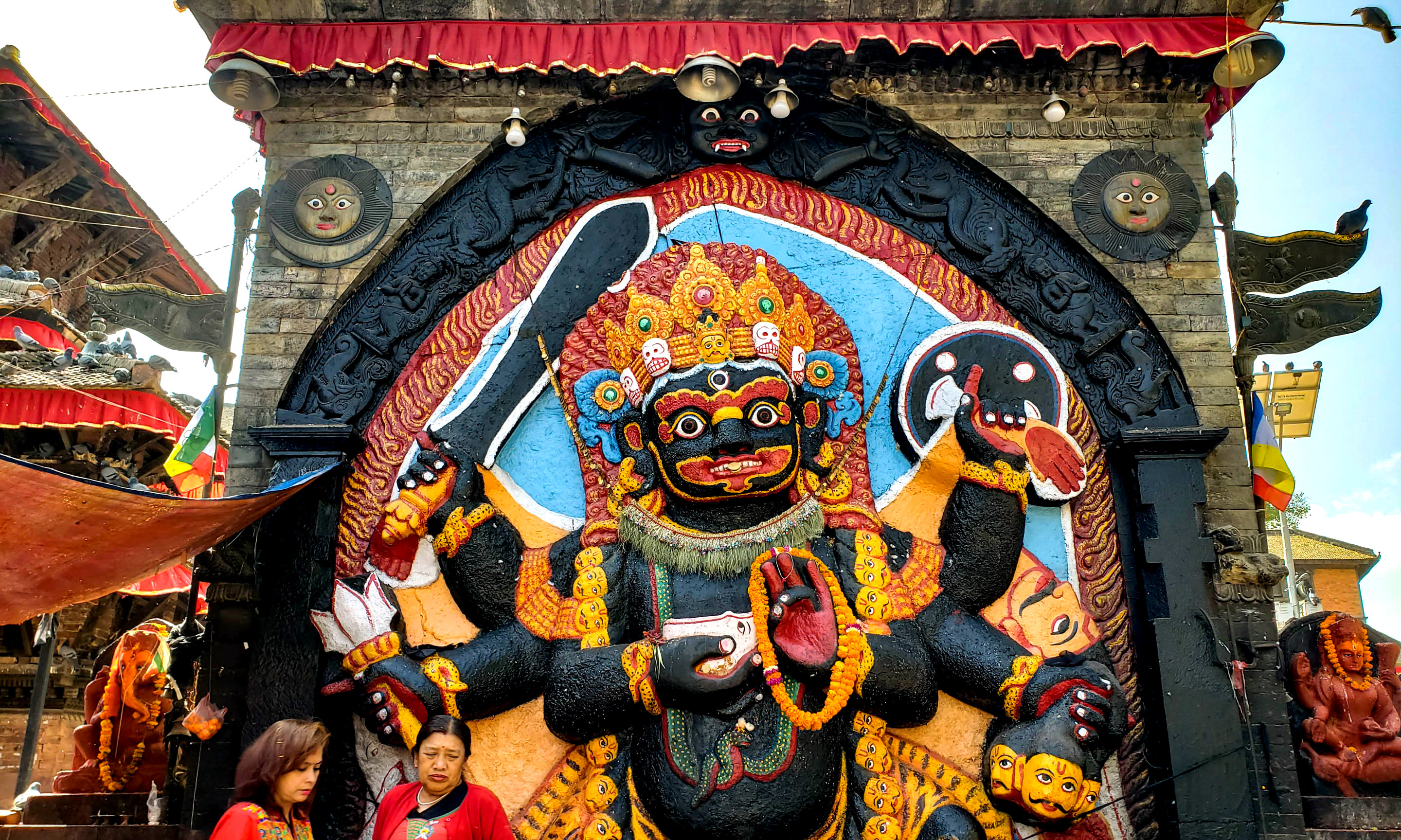
What sets this sculpture apart is its monolithic nature – such colossal single-stone depictions are a rarity in Nepal. The statue has become a spiritual epicenter for Hindu devotees who frequently visit to offer prayers and present food as a token of their devotion.
Gaddi Baithak
Standing distinctively amidst the rich architecture of Kathmandu Durbar Square, the Gaddi Baithak Palace serves as a fascinating testament to European influence. This unique structure came into existence in 1908, influenced by a European tour undertaken by the then-Rana Prime Minister. His journey through Europe left him profoundly inspired, leading to the creation of this architectural marvel. Today, this iconic edifice plays host to a multitude of ceremonies, prominently featuring during the revered Gai Jatra celebrations.
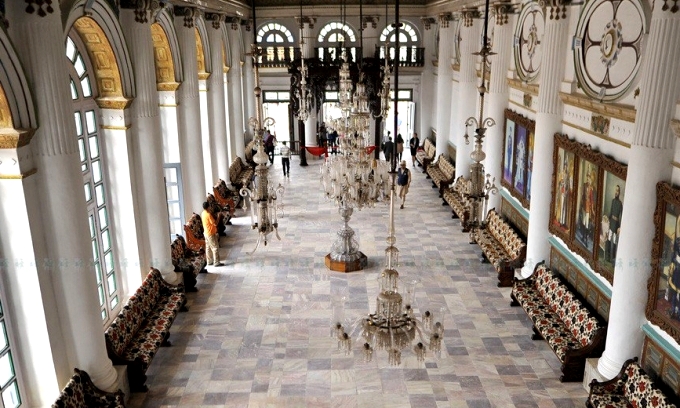
Shiva Parvati Temple
Situated in the heart of Durbar Square, adjacent to the renowned Kumari Ghar, stands the divine Shiva-Parvati Temple. Dedicated to Lord Shiva, the deity of dissolution, and Goddess Parvati, his eternal consort, this temple is a beacon of spirituality. The grand entrance is flanked by majestic stone lions, symbolizing protection, while an intricately crafted statue showcasing Shiva and Parvati in harmonious union graces the space above. The temple witnesses a surge of devotees, particularly during the vibrant Teej festival and every Monday, reflecting its significant place in the hearts of the Hindu populace.
Kathmandu Durbar Square Entry Fee
Below, the entry fee for foreigners, Nepalese in Basantapur Durbar Square, and inside the museum is listed:
Place Entrance including Museum
Foreign National including China:- NPR 1000
SAARC Nationals:- NPR 150
Nepalese:- FREE
Remarks:- Below 10 years have free entry!
Tips While Visiting Kathmandu Durbar Square
Kathmandu Durbar Square, a UNESCO World Heritage site, is a remarkable blend of history, culture, and architectural grandeur. If you're planning to immerse yourself in its splendor, consider these invaluable tips to enrich your experience:
- Experienced Guide: While the architecture is stunning, the stories behind each structure are even more captivating. Our knowledgeable local guide can provide deep insights into the history and significance of each site.
-
Be Mindful of Photography: Some areas within Durbar Square might have restrictions on photography, especially within temples. Always ask for permission before capturing moments.
-
Avoid Peak Hours: If you wish to experience the square in relative peace, consider visiting early in the morning or late afternoon to avoid large tour groups.
-
Wear Comfortable Footwear: The square is expansive, and you'll be walking on stone-paved paths. Comfortable shoes are a must.
-
Stay Hydrated: Kathmandu can get quite warm, especially during summer. Carry a bottle of water to stay refreshed.
- Beware of Pickpockets: Like any other major tourist attraction, it's essential to be aware of your belongings.
-
Admire, But Don’t Touch: Many artifacts and structures are centuries old. It's best to admire them from a distance to prevent any unintentional damage.
-
Support Local Artisans: The area around Durbar Square is home to many local artisans selling handcrafted items. Purchasing from them can be a way to support the local economy.
-
Respect Religious Practices: If you happen to visit during a religious ceremony or festival, maintain decorum and stand at a distance unless invited closer.
-
Stay Environmentally Conscious: The square is an important heritage site. Ensure you don't litter and perhaps even consider carrying a small bag to collect and dispose of any trash later.
Kathmandu Durbar Square is more than just an attraction; it's a window into Nepal's soul. Treating it with respect and understanding will undoubtedly enrich your experience and leave you with memories to cherish.
Kathmandu Durbar Square stands as a testament to Nepal's rich cultural and architectural heritage. This UNESCO World Heritage site is not merely an assortment of ancient structures; it's a living embodiment of the nation's history, showcasing centuries of art, beliefs, and traditions. The square has witnessed the rise and fall of dynasties and survived natural calamities, and yet, it continues to enchant visitors from around the globe with its timeless beauty.
For travelers, the square offers a journey through time, where every stone, temple, and courtyard tells a tale of bygone eras. The intricate wood and stone carvings, the magnificent temples, and the vibrant atmosphere reflect the soul of Kathmandu itself. With the backdrop of the bustling city, Kathmandu Durbar Square remains a sanctuary of culture, providing a genuine experience of Nepal's essence. Whether you're a history enthusiast, an architecture lover, or a spiritual seeker, this iconic landmark promises memories that will linger long after the journey ends.
If you need any further information, please contact us by email: [email protected], Phone: +977- 985 100 5129 (WhatsApp)
#Tags
Tripadvisor
5.0910 reviewsGoogle
4.8110 reviewsFacebook
4.1 recommend44 ReviewsTrustpilot
4.1 Great(5 reviews)- Trusted by50K plus traveller

